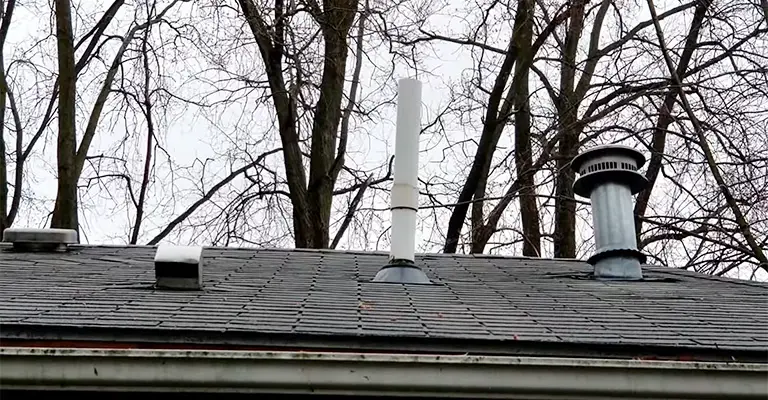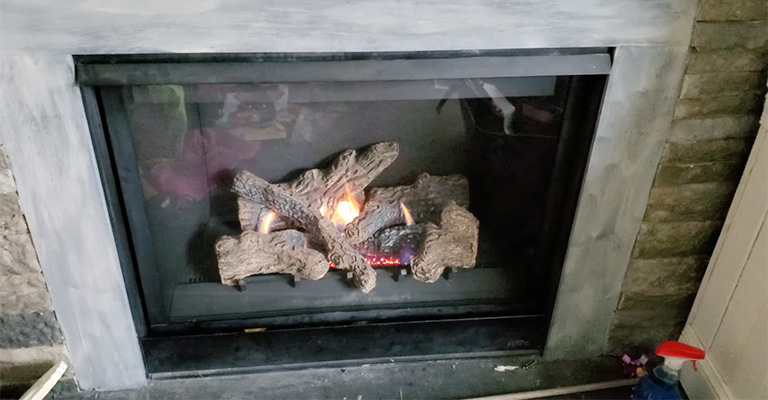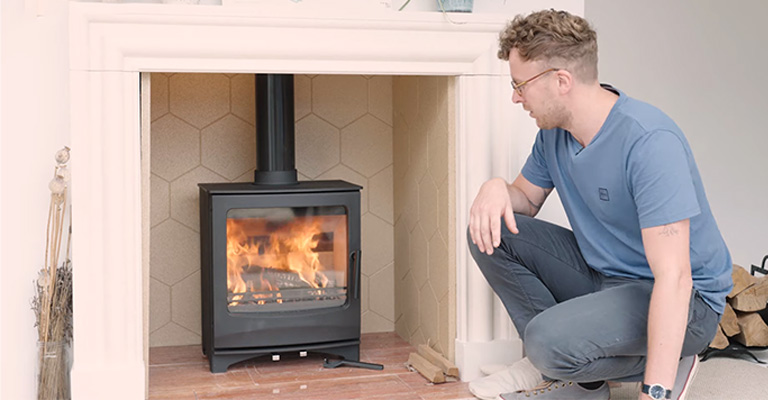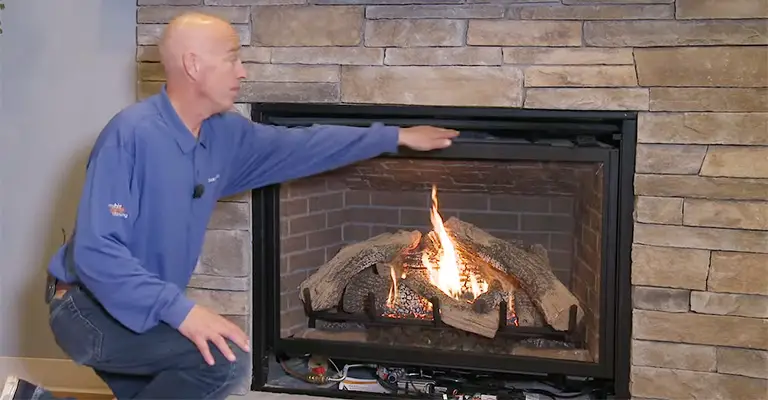Imagine a cozy fireplace in your home, keeping you warm and snug on chilly days. It’s a delightful scene, right?
But here’s the thing – sometimes, when it rains, that lovely fireplace smell turns not-so-lovely.
The smell of an unpleasant fireplace will likely arise after a rainstorm, especially if you own one. Most people try installing dampers and caps on their flues to reduce odors after rain, but this rarely works.
You should understand the source of unpleasant odors in your fireplace after rain and how to minimize them when possible.
Why Fireplaces and Chimneys Smell After It Rains?
Frequently, people complain about the smell of their chimneys even when no fire is burning or if there hasn’t been one for a long time.
An operating fireplace releases some odor but will move up the chimney and out of the home before it seeps inside.
The fireplace may smell if fresh air is being sucked into the room from the outside.
The solution to this problem can be found in two ways: not allowing smelly air into the house and getting rid of the smell from the outset.
During the summer months, combined with humid heat and moisture from rain, built-up creosote and soot will also cause an unpleasant odor when your fireplace and chimney haven’t been cleaned.
The buildup of this material can be prevented through an annual chimney sweep.
5 Causes of Moisture Buildup Inside of the Chimney

1. Poor Ventilation: It is essential to keep the chimney ventilated to keep moisture levels appropriate.
The accumulation of moisture causes the musty smell. But keep in mind that a musty smell could indicate the presence of mold or mildew.
2. Humidity: Most states do have many humid days. When the cool air in your fireplace stays for some time, you can be sure the warm, moist air is sitting in your chimney for longer.
3. Chimney Cap: If the chimney cap is old, broken, or not present, rain and snow can accumulate inside. Since the rain has been approaching horizontally lately, the rain is certainly causing concern through the chimney.
4. Rain and Snow: Since the chimney is quite susceptible to moisture accumulation, we want to try to keep rain and snow to a minimum.
5. Cracks in the Chimney: We all know that moisture just finds a new way to enter whenever there is a brick-and-mortar crack.
This will occur over time, continuing to deteriorate and become more porous as more moisture accumulates.
The Smell of Moisture

After seeing how moisture builds up and gets inside our home, we need to discuss how to eliminate the musty smell emanating from the fireplace.
Creosote: Whether you use a wood-burning fireplace or not, creosote deposits may accumulate on the wall or chimney liner. The smell of creosote is unpleasant when left untreated when you add moisture to the substance.
Mold & Mildew: This type of fungus sometimes emits a musty odor when growing. An accumulation of trapped moisture causes this.
BBQ or Smoky Smell: Rather than the fresh aroma of a steak cooked on the BBQ, this is more of a smell of faded burnt food.
The most common cause of this is soot or creosote in the chimney. The scent comes from combining it with moisture.
Preventing Fireplace Odors
You can take a few different steps to prevent or minimize smells from your chimney after it rains.
If your chimney flue is gasketed, you’ll create a more robust seal and decrease the amount of air entering your home.
Moreover, you can harness the power of a candle or a candelabra to push air up rather than pull it into your home after rain by lighting one and placing it in your fireplace after it rains.
Cleaning your fireplace regularly can also reduce bad odors coming from your chimney.
If you clean your chimney and fireplace regularly, you will prevent a lot of the debris and residue from building up inside your fireplace and creating foul odors when air passes through them.
It is possible to reduce the severity of the unpleasant odor that comes into your home after the rain by cleaning your fireplace and chimney.
Adding regular chimney and fireplace cleaning to your home maintenance schedule will help you maintain your fireplace’s efficiency, effectiveness, and safety while keeping your home warm and reducing your fire risk.
More On Why My Fireplace Is Smelly

If you are experiencing a fireplace odor, inspecting and sweeping is an excellent first step. It will make sure there is no creosote buildup and eliminate other common issues that may be causing the problem.
In a chimney cleaning, any leaves, rotting animals, or animal feces will be detected and removed, eliminating these possibilities as a cause of the smell.
It is helpful to have a thorough cleaning and inspection, but these things won’t always address the issue.
It is difficult to altogether remove creosote buildup from stone masonry due to its seep-through nature.
It may still be necessary to address moisture issues and air pressure problems. The home must, therefore, be treated accordingly in order to prevent the smell from returning.
Two Most Common Causes Of Fireplace Smelling
Fireplace odors are most commonly caused by water seeping into the chimney and negative air pressure in the home, causing odors to enter the room rather than leave through the roof.
If a rain cap covers the top of the chimney flue, you can rule out water as a possible factor.
Ideally, the chimney exterior should be as waterproof as possible to prevent moisture from entering its shaft.
In addition to preventing moisture from building up in the chimney, a rain cap provides a barrier to prevent animals and debris from falling into the chimney.
Fixing the water problem is relatively simple, but solving the negative air pressure problem is not so straightforward.
A negative air pressure can cause odors to enter your home, regardless of why it’s occurring. The best way to resolve this issue is to compensate for what is causing the negative pressure in your home.
A weatherized home or improved venting makes this problem more prevalent in the warmer months.
All of these things adjust the air pressure in a home, causing the negative air pressure that requires additional air to be drawn through the fireplace into the house.
A new furnace could cause this change in pressure, as well as the installation of windows, dryers, new roofing, and exhaust fans in the bathroom and kitchen.
As a result of negative air pressure in a house, more air has to enter the home, and the path with the least resistance is most often through the fireplace.
Correcting The Negative Air Pressure Problem
Here are three straightforward steps you can take to resolve the negative air pressure issue. You can do this in many different ways.
It’s best to combine a few steps until you find the perfect balance preventing the smell from spreading. Taking a simple approach is the first step.
- Ensure that the fire damper of the fireplace is closed when the fireplace is not in use. Some dampers are not perfectly sealed, so this will sometimes solve the problem, but most dampers aren’t.
- Ensure that a glass fire screen keeps the warm air from escaping the fireplace during a fire.
- A damper on the top of the chimney that is controlled by a metal chain hanging into the hearth. It can be beneficial to monitor airflow with these devices.
- Distribute outside combustion air to combustion appliances that cause unbalanced air pressure.
Final Words
A fireplace creates the perfect ambience on a cold winter day with the smell of burning logs and the heat from a crackling fire, but any other day, it should remain only a decorative feature.
Make sure your fireplace doesn’t attract unwanted attention with an obtrusive smell. Having your fireplace professionally cleaned by a chimney sweep will give it a fresh, clean smell.







